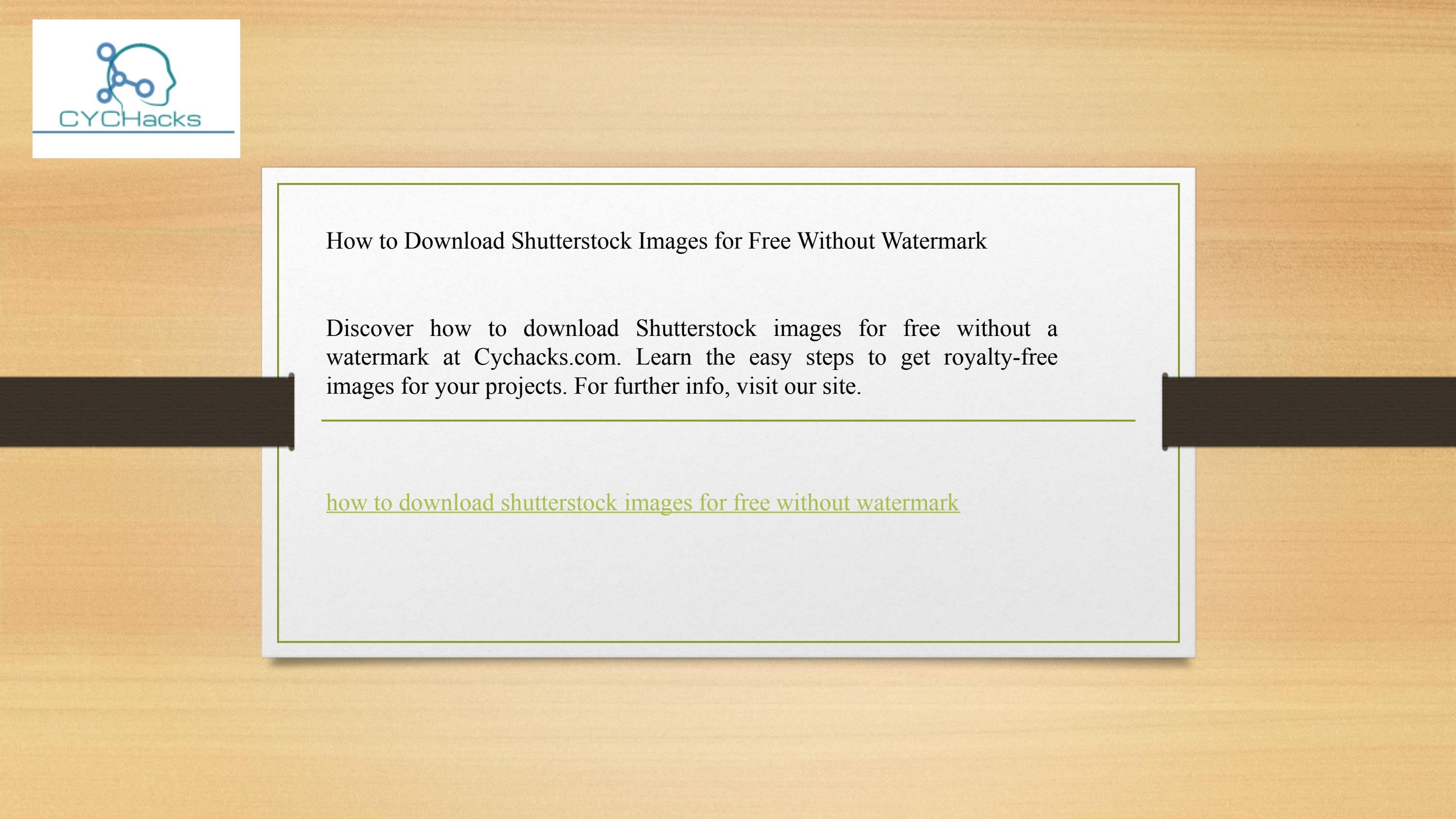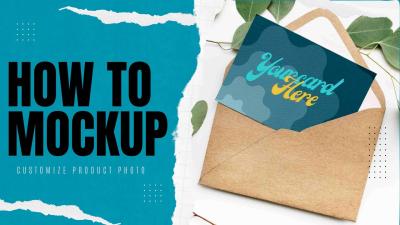If you’ve ever browsed Shutterstock, you know it’s a treasure trove of stunning images perfect for your projects, whether it’s a blog, presentation, or social media post. But sometimes, you just want to grab an image quickly without all the fuss or cost. That’s where free and easy Shutterstock image downloader solutions come into play. These tools and methods can help you save images efficiently, often without needing advanced tech skills. However, it’s essential to understand how these downloaders work and the legal landscape surrounding their use to avoid potential pitfalls down the line.
Legal Considerations When Downloading Shutterstock Images

While it might be tempting to use free download tools, it’s crucial to remember that Shutterstock images are copyrighted. Using images without proper licensing can lead to serious legal issues, including fines or lawsuits. Here’s what you need to keep in mind:
- Respect Licensing Agreements: Shutterstock offers images under various licenses—Standard and Enhanced. Always ensure you have the right license for your intended use.
- Avoid Unauthorized Downloads: Using third-party downloaders or hacks to bypass licensing fees is illegal and violates Shutterstock’s terms of service. This can result in account suspension or legal action.
- Fair Use vs. Commercial Use: If you’re using images for personal projects, fair use might apply, but commercial use usually requires purchasing the appropriate license.
- Check Image Rights: Some images come with restrictions, such as model or property releases. Make sure the image you’re downloading is cleared for your specific use case.
In summary, always prioritize legal and ethical practices when downloading Shutterstock images. If you’re unsure about licensing or legalities, it’s best to use Shutterstock’s official download options or look for images labeled for free reuse. This way, you can enjoy beautiful visuals without risking legal trouble.
3. Official Methods to Download Shutterstock Images
When it comes to getting images from Shutterstock, the most straightforward and legitimate way is through their official platform. Shutterstock is a paid service, which means that images are protected by licensing agreements to support the photographers and creators behind them. So, if you’re looking to download images legally and without any worries, sticking to their official methods is the way to go.
Here’s how you can do it:
- Purchasing a Subscription: Shutterstock offers various subscription plans, from monthly to yearly options. Once you select a plan that fits your needs, you can download a specific number of images each day or month. Just log into your account, browse for images, and click the download button. The images will be saved in your default download folder, ready for use.
- On-Demand Downloads (Pay-As-You-Go): If you don’t need a subscription, you can buy image packs for a set number of downloads. After purchasing, you can download images individually as needed. This is perfect if you only require a few images without committing to a monthly plan.
- Using the Shutterstock Editor: Shutterstock also provides an editor tool where you can customize images—crop, resize, add text—before downloading. When you’re satisfied, you simply click download, and the image is saved to your device.
It’s important to remember that these official methods ensure you’re using images within the scope of their licenses. Plus, you’ll get high-resolution images suitable for print, web, or any other project you have in mind. While it might seem more convenient to look for free alternatives, paying for images guarantees quality, legal use, and supports the artists behind the work.
4. Free Tools and Resources for Downloading Shutterstock Images
Now, I know what you might be thinking—are there any legitimate free tools or resources that can help me download Shutterstock images without paying? The truth is, because Shutterstock‘s images are copyrighted and protected, there aren’t truly free, legal tools to download their images without going through official channels. Using unauthorized tools or methods can lead to copyright infringement and legal issues.
However, there are some legitimate ways to access Shutterstock images for free or at a low cost:
- Free Shutterstock Images: Shutterstock occasionally offers free images as part of promotional campaigns or through their own free trial. Signing up for a free trial often gives you access to a limited number of downloads at no cost. Just remember to cancel before the trial ends to avoid charges.
- Creative Commons and Public Domain Resources: While not Shutterstock images, there are many free image resources like Unsplash, Pixabay, and Pexels. These sites offer high-quality images you can freely download and use without licensing worries, ideal for projects where Shutterstock images aren’t necessary.
- Official Shutterstock Free Resources: Shutterstock has a section called Shutterstock Free Images which features a curated collection of free-to-use images. You can browse and download these images directly from their site, perfect if you need high-quality images without a fee.
- Using Browser Extensions or Screen Capture Tools: While technically possible, using screen capture tools or browser extensions to grab images from Shutterstock without licensing is not recommended. It’s often illegal and violates copyright laws. Always aim to respect intellectual property rights.
In summary, while there aren’t many legitimate free tools specifically designed for downloading Shutterstock images without paying, exploring official free resources, trials, or alternative free image sites is your safest bet. Remember, supporting creators by paying for images or using licensed free resources helps keep the creative ecosystem thriving—and ensures you’re on the right side of the law!
5. Step-by-Step Guide to Using Free Shutterstock Image Downloaders
So, you’re excited to start downloading stunning images from Shutterstock without breaking the bank? No worries! While Shutterstock officially doesn’t offer free downloads unless you have a subscription or purchase a license, there are some legit and safe ways to access free images through reputable tools and sites. Here’s a simple step-by-step guide to help you navigate the process using free image downloaders and resources.
Step 1: Find a Reliable Free Image Downloader
First things first, look for trusted platforms or tools that allow you to download free images legally. Some popular options include:
- Pexels
- Unsplash
- Pixabay
- Freepik (some images are free, check licenses)
These sites curate high-quality images that are free to use, often even for commercial purposes. Always double-check the license before downloading.
Step 2: Search for Your Desired Images
Once you’ve picked your site, use the search bar to type keywords related to the images you need. For example, “nature,” “city skyline,” or “business meeting.” Use filters if available to narrow down your options based on orientation, color, or size.
Step 3: Select and Preview the Image
Click on the image thumbnail to see it in full size. Make sure it’s high-quality and meets your needs. Pay attention to the resolution and licensing details—some images are free to use without attribution, while others may require credit.
Step 4: Download the Image
Look for the download button, usually marked as “Download” or with a downward arrow icon. Some sites offer multiple sizes—choose the one that fits your project best. Click the button, and your image will be saved to your device.
Step 5: Organize and Save Your Downloads
To keep things tidy, create a dedicated folder for your images. Rename files if necessary so you can easily find them later. Remember to keep track of licenses if attribution is needed.
Bonus Tips:
- Always respect licensing terms—don’t use images that are marked as restricted or require attribution if you’re not willing to give credit.
- Use browser extensions or download managers carefully—stick to trusted sources to avoid malware.
By following these steps, you can easily access a wide array of beautiful, free images for your projects, presentations, or social media posts. Happy downloading!
6. Tips for Ensuring Quality and Resolution of Downloaded Images
Nothing kills a great project faster than pixelated or blurry images. So, how can you make sure the images you download are high quality and resolution? Here are some handy tips to keep your visuals sharp and professional-looking.
1. Know Your Image Resolution Needs
Before you start downloading, consider where you’ll be using the image:
- Web use: Generally, 72 DPI and a resolution of at least 1200 pixels wide works well.
- Print: Higher resolution, usually 300 DPI, is necessary for clear prints.
Matching the resolution to your project ensures your images won’t appear pixelated or blurry.
2. Choose the Right Image Size
When downloading from free sites, select the largest available size for better quality. Many platforms offer multiple options—opt for the highest resolution version. If you’re unsure, compare the pixel dimensions before downloading.
3. Check the Image Format
JPEGs are common, but if you need images for editing or high-quality prints, consider PNGs or TIFFs. These formats often support higher quality and transparency options.
4. Preview Before Downloading
Always zoom in and preview the image in full size on your device. Look for any blurriness, noise, or compression artifacts. If the image looks fine on the site, it’s likely good to go.
5. Use Editing Tools for Enhancement
If you find an image that’s almost perfect but needs a little sharpening or color correction, don’t hesitate to use editing software like Photoshop, GIMP, or even online editors. Small tweaks can make a huge difference in quality.
6. Keep Original Files Safe
Store your high-resolution downloads in a dedicated folder. This way, you won’t have to re-download or search for them again, and you’ll always have access to the best quality versions.
7. Beware of Compression and Watermarks
Some free image sites or downloaders might compress images to save bandwidth, which can reduce quality. Always check the image file size and appearance after download. Also, avoid images with watermarks—these are often a sign they’re not free or fully licensed for your use.
8. Test Your Images in Context
Before finalizing your project, insert the image into your design or presentation to see how it looks at actual size. This helps you catch any issues with resolution or clarity early on.
By following these tips, you’ll ensure your images look crisp, professional, and ready to impress. High-quality visuals can truly elevate your work and make a lasting impact!
7. Alternatives to Shutterstock for Free Stock Images
If you’re on the hunt for high-quality images without breaking the bank, Shutterstock isn’t your only option. Luckily, there are plenty of fantastic websites offering free stock images that can suit your needs. Whether you’re working on a personal project, blog, or small business, these platforms can be real lifesavers.
Here are some popular alternatives:
- Unsplash: Known for its vast collection of stunning, high-resolution photos, Unsplash offers images contributed by photographers worldwide. The best part? You can use these images for free, even commercially, without attribution (though giving credit is appreciated!).
- Pexels: Another favorite among creators, Pexels provides a wide variety of free stock photos and videos. Their library is easy to search, and the quality is consistently high.
- Pixabay: Offering over 1.7 million free images, illustrations, vectors, and videos, Pixabay is a treasure trove for anyone needing versatile visual content. All media is released under Creative Commons CC0, so you can use it without worry.
- Gratisography: If you’re looking for quirky, artistic, and unique images, Gratisography might be your go-to. The site is curated by photographer Ryan McGuire, offering fun and unusual photos at no cost.
- StockSnap.io: With hundreds of new images added weekly, StockSnap features high-quality photos suitable for various projects. Their user-friendly search makes finding the perfect picture a breeze.
While these sites are fantastic, always double-check the licensing terms, especially if you plan to use images commercially. Most free platforms now offer images that are safe for commercial use, but it’s good to be cautious and give credit where possible. These alternatives provide a great way to access beautiful visuals without the need for paid subscriptions or complicated download methods, making your creative process smoother and more budget-friendly.
8. Conclusion and Best Practices for Downloading Shutterstock Images
Downloading images from Shutterstock or any stock image platform might seem straightforward, but a few best practices can help you avoid headaches and ensure you’re using images ethically and legally.
First, always respect copyright and licensing terms. Even if images are available for free or through free download options, check whether they require attribution or have restrictions on commercial use. Ignoring these rules can lead to legal issues down the line.
Second, use reputable and secure methods to download images. If you’re using free tools or websites, stick to well-known sources to avoid malware or low-quality files. When downloading from Shutterstock directly, make sure your internet connection is secure, and consider using official channels or authorized apps to prevent issues like broken links or corrupted files.
Third, optimize images for your specific needs. Large, high-resolution images are great for printing or detailed projects, but they can slow down your website or make your files unnecessarily bulky. Use editing tools to resize or compress images without losing quality.
Here are some quick tips for best practices:
- Always check licensing: Ensure you understand the usage rights before downloading or using an image.
- Download from official sources: Use Shutterstock’s platform or trusted download tools to avoid scams or malware.
- Organize your images: Keep your downloads sorted in folders with clear labels for easy access and management.
- Credit when required: If attribution is needed, give proper credit to the photographer or platform.
- Stay updated: Keep an eye on licensing updates or changes in Shutterstock’s policies to remain compliant.
By following these best practices, you can make the most out of Shutterstock images while respecting creators’ rights and maintaining your project’s professionalism. Remember, a little diligence goes a long way in ensuring your creative work is both beautiful and legally sound.


